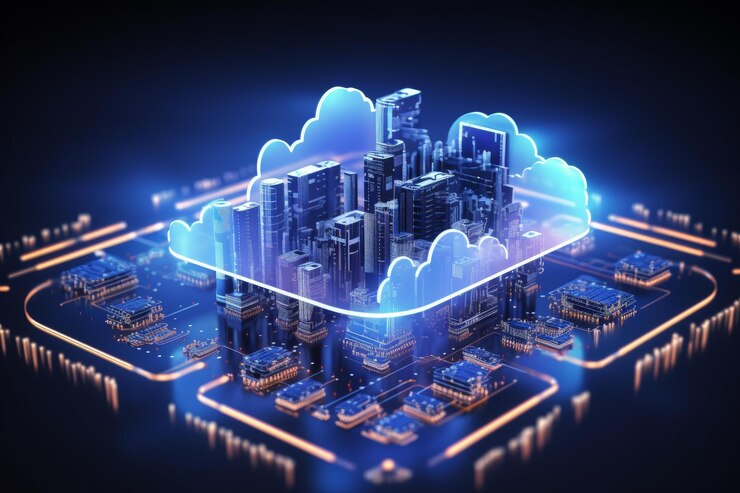In the dozens of innovations made in business processes every year, virtualization stands out as the most transformative change since companies started outsourcing operations. As the name suggests, virtualization is the process of creating digital servers and virtual machines for both hardware and software.
If it sounds complicated, it’s because it is, and the ways businesses have been forced to adapt to virtualization are more complex. This article aims to explain the concept of the process of virtualization, its most significant applications, and provide a detailed analysis of the associated costs and benefits.
Virtualization - What is it?
The deeper you go into the virtualization rabbit-hole, the more awe-inspiring it becomes. In essence, businesses are creating virtual copies of entire servers, something that as thought impossible for the longest time. Through processes like emulation and abstraction, you can create virtual machines (VMs) that operate independently and have the ability to run on a single system, simultaneously. This lets you isolate certain components of your operations and give you the flexibility to run demos and edits within the VM.
How does it work?
If you’re going to take away one thing from this explanation, it should be the creation of the hypervisor. It’s specialized software that acts as a bridge between physical hardware and virtual machines. It singlehandedly allocates resources to VMs, ensuring each machine functions properly. While there are several hypervisors, each with a dedicated purpose, there are two primary types.
- Bare-Metal Hypervisors are directly installed on hardware so they can bypass the operating system. It’s by far the most efficient way to create a secure virtualization environment, but it needs specialized machinery and hypervisor experts to install and maintain.
- Hosted hypervisors run applications on top of the host machine's operations system. They’re easier to install and maintain, but aren’t as effective as their bare-metal brothers.
The 4 types of IT Infrastructure Virtualization
Server Virtualization:
This is the focal point of all virtualization strategies, as we discussed above. The ability to create or dismantle servers with relative ease empowers businesses to take on a much wider variety and quantity of projects. Virtual machines also reduce your hardware footprint, optimize resources, and enhance server performance.
Storage Virtualization:
Virtualization helps organizations optimize their storage by reducing costs and improving data protection protocols. This is only possible through a unified, abstract view of physical storage, so you can access it without understanding the hardware. This abstraction removes and redundancies in your data to save storage and improves your disaster recovery plan.
Network Virtualization:
Servers, physical and virtual, are useless if you can’t access them. In the past, companies used a physical network infrastructure that was riddled with maintenance and security issues. With network virtualization, you can overlay a virtual network on top of a physical one. This empowers you to isolate desired segments in your network to prevent the spread of malware, and boost network performance.
Desktop Virtualization:
Desktop hardware is one of the primary costs for any IT organization. By creating virtual desktops that can be accessed from any device, you can improve user experience and employee productivity. Additionally, virtual desktops are much more secure because you can control, monitor, and manage all of them from one location.
Why Virtualize?
Considering how complicated and expensive the installation and management of virtualized assets can be, you may be wondering if it’s worth it. While the answer may vary depending on the size of your business or te industry you’re in, virtualization offers a wide range of benefits that have the potential to bring massive improvements in your operational ability.
Resource Utilization
- Physical servers are difficult, and expensive, to manage. You need space, security, cooling systems, dehumidifiers, and more. However, virtualization lets you consolidate all your servers on a single host, reducing energy consumption and making it much easier to manage data center space.
- The hardest part of server management is allocating resources. CPU cycles, memory, and storage can become bottlenecks if they aren’t optimized. However, hypervisors automatically allocate resources on physical servers for optimum performance.
- Virtual machines give you a buffer for unexpected projects, higher workloads, or unplanned maintenance.
- Virtualization simplifies IT management and reduces administrative overhead by creating a centralized platform for all your virtual machines.
Flexibility
Establishing a physical server is expensive, and it can take a lot of time for you to allocate the necessary resources. Everyone who works in technology knows the name of the game is speed - both in innovation and in deployment. Virtual machines are exponentially faster to create and deploy, giving you more time to adapt to new market conditions.
Once set up, they let you create isolated spaces for different projects where you can test new projects before deployment. Lastly, in case something goes wrong, virtual machines are easily copied and moved to a new physical server. Having such a simple disaster recovery plan minimizes downtime and protects critical business operations.
Scalability
Once you set up a server, it’s costly and difficult to accommodate any changes in workload without disrupting the entire office. On the other hand, virtual machines are easy and virtually free to upscale or downscale according to your needs. They also improve vertical scalability by allocating more resources to individual machines and let you handle temporary spikes in workload without a dip in performance.
The Security Challenges of Virtualization
Whenever we create a complex system of operations online, we become more vulnerable to cyberattacks and theft. The very nature of virtual machines makes them hard to secure—they're complex networks with many possible points of entry in a virtualized environment. Of course, traditional security protocols we use for physical servers simply don’t apply to VMs. Engineers were forced to develop more abstract security controls for both VMs and their underlying hypervisors.
We mentioned how virtual machines are easy to create and destroy. While that’s great for operational efficiency, it also makes it easier for unauthorized users to access sensitive data.
You need to establish more robust security protocols like MFA and constant monitoring to protect yourself from hackers. Similarly, it’s great that virtual machines are interconnected for efficiency, but it’s a nightmare for security professionals. A single compromised VM can open up your entire network to a security breach. It’s imperative you segment your network and isolate your resources to protect yourself from a complete hijacking.
Auditing Virtual Machines and Networks
IT infrastructure audits are the industry's way to demonstrate your commitment to regulations, security, and transparency when it comes to client data. When businesses began creating virtual machines, auditors had to recreate their entire process to overcome the difficulties in tracking changes in VMs. For instance, verifying physical servers was an extremely straightforward process, but VMs can be migrated between different physical servers. Auditors need to verify system logs and configuration data instead.
However, the news isn’t all bad. Once you consolidate multiple physical servers into just one or two servers, it’s much easier for auditors to examine. Auditing virtual networks may have gotten more complex, but it’s far from impossible. Auditors have been forced to create automated monitoring and analyzing tools to overcome the fluidity of a virtual network.






